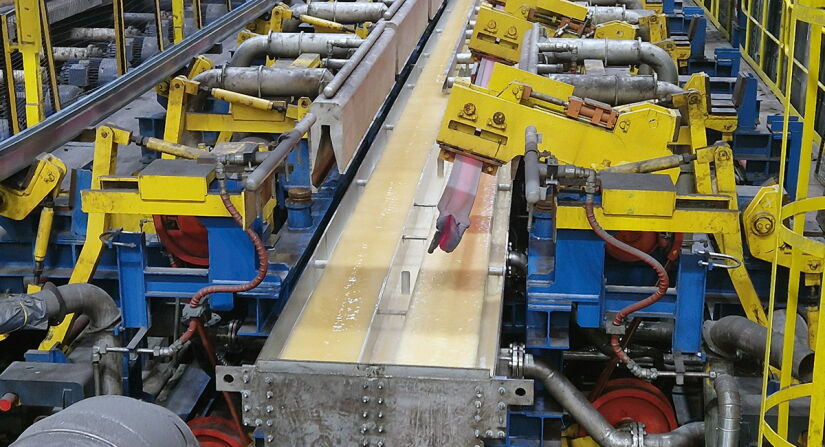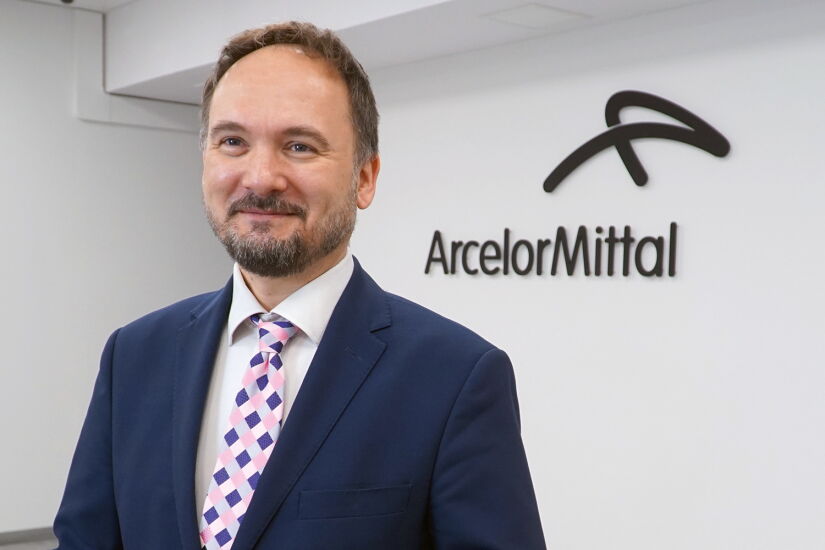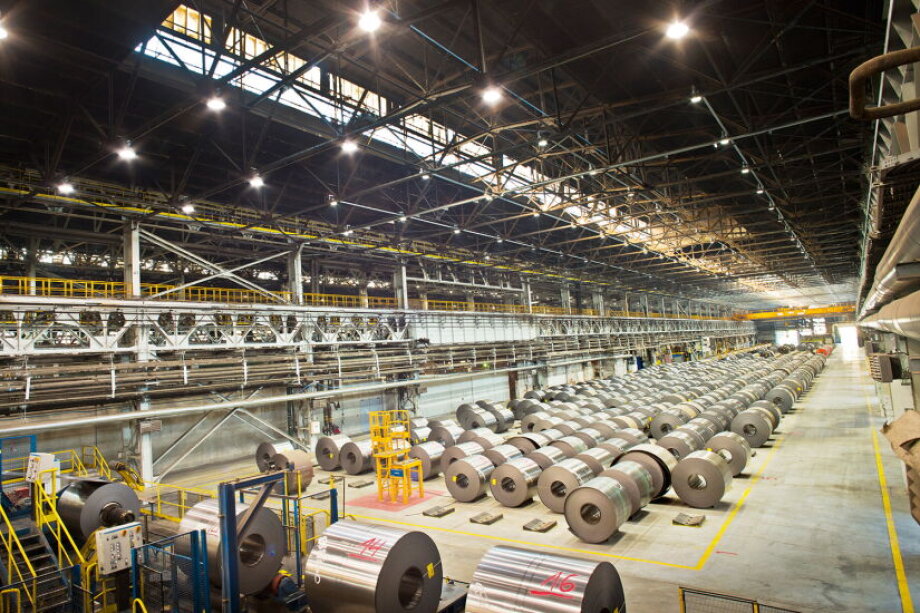Sustainable development is a megatrend today. How can steel contribute to it?
Without steel, there is no sustainability. I know, it sounds like bragging, but it's true. Steel is not just one product. There are more than 3,500 different grades of steel, about 75 percent of which were developed in the last 20 years. The average life cycle of steel products is about 40 years.
Once produced, steel can be reused many times. It’s also the most recycled material.

But the steel production process is associated with emissions.
That's true. However, I want to emphasize that when considering the entire life cycle, steel products have a lower environmental impact when compared to alternatives such as aluminium.
At ArcelorMittal Poland, we have made significant strides in reducing our environmental footprint, cutting CO₂ emissions by 42% and energy consumption by 41% over the past two decades. We are currently working on a decarbonization plan. At ArcelorMittal Group, we want to achieve net-zero emissions by 2050.
Decarbonisation is a huge challenge, but steel is uniquely suited to support this effort, even helping other industries lower emissions.
How?
Take the automotive industry: ArcelorMittal's lighter steel grades are crucial for the automotive industry. Steel is also pivotal in the energy transition, serving as a key material in constructing wind turbines, photovoltaic panels, and transmission infrastructure. We use our R&D and engineering expertise to develop the steel grades needed for new applications.
Our products can help customers lower their carbon footprint. No other material can compare to steel in this respect.
Staying on the topic of transport, ArcelorMittal Poland’s rolling mill in Dąbrowa Górnicza is among an elite group of manufacturers capable of producing 120-meter-long rails. So, what makes it so special?
We all use rail transport, more or less. The development of public transport and transportation of materials will continue in the coming years, with an increasing emphasis on sustainable transport and reducing emissions. High-Speed rail is the future. Ten years ago, we started the production of a 120-meter rail, and since last year we’ve achieved thermal hardening of the rail head. Long rails significantly increase safety in rail transport. The hardened rail head is more resistant to wear. In Poland, plans are underway to increase train speeds to 350 km/h, demanding upgraded infrastructure.
While faster travel benefits passengers, the ecological aspect is a key consideration. Thanks to ArcelorMittal’s extensive product portfolio, we are able to supply steel products for these projects.

Wojciech Koszuta
Chief Executive Officer, Member of the Board of Directors at ArcelorMittal Poland
Wojciech Koszuta started his career in Huta Florian in 2001 (today one of the units of ArcelorMittal Poland) as a processing technology engineer.
In 2003, he joined Ispat Polska Stal (today ArcelorMittal Poland) as a production planning engineer and transitioned to Mittal Steel Poland in 2005 as the production planning office manager. He became the process engineering department manager at ArcelorMittal Poland in 2007 and has since held various positions at ArcelorMittal Poland's Polish sites. In 2017, he took up the role of Krakow cold rolling mill director.
From 2020 to 2023 Wojciech served as COO of quality and flat products, with additional responsibilities for central maintenance, PMM, and the progress team from 2022. From 2023: Chief Executive Officer and Member of the Board of Directors of ArcelorMittal Poland.
Wojciech holds a degree in metallurgy and a postgraduate degree in material science from the Silesian University of Technology in Gliwice, Poland. He also completed a postgraduate program in business administration and marketing at the Karol Adamiecki University of Economics in Katowice, Poland.



















